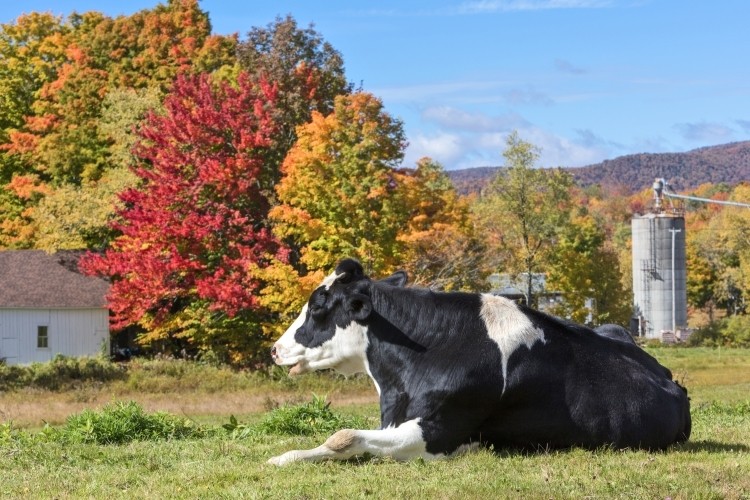USDA opens 2022 signup for Dairy Margin Coverage

The signup period – which is open now and runs to February 18, 2022 – enables producers to get coverage through the safety-net program for another year as well as get additional assistance through the new Supplemental DMC.
Supplemental DMC will provide $580m to better help small- and mid-sized dairy operations that have increased production over the years but were not able to enroll the additional production. Now, they will be able to retroactively receive payments for that supplemental production. Additionally, USDA’s Farm Service Agency (FSA) updated how feed costs are calculated, which will make the program more reflective of actual dairy producer expenses.
“Dairy Margin Coverage is a critical safety-net for producers, and catastrophic coverage is free. These DMC updates build on other efforts of the Biden-Harris Administration to improve DMC and other key USDA dairy programs,” Under Secretary for Farm Production and Conservation Robert Bonnie said.
“We encourage dairy producers to make use of the support provided by enrolling in supplemental coverage and enroll in DMC for the 2022 program year.”
Eligible dairy operations with less than 5m pounds of established production history may enroll supplemental pounds based upon a formula using 2019 actual milk marketings, which will result in additional payments. Producers will be required to provide FSA with their 2019 Milk Marketing Statement.
Supplemental DMC coverage is applicable to calendar years 2021, 2022 and 2023. Participating dairy operations with supplemental production may receive retroactive supplemental payments for 2021 in addition to payments based on their established production history.
Supplemental DMC will require a revision to a producer’s 2021 DMC contract and must occur before enrollment in DMC for the 2022 program year. Producers will be able to revise 2021 DMC contracts and then apply for 2022 DMC by contacting their local USDA Service Center.
After making any revisions to 2021 DMC contracts for Supplemental DMC, producers can sign up for 2022 coverage. DMC provides eligible dairy producers with risk management coverage that pays producers when the difference between the price of milk and the cost of feed falls below a certain level. So far in 2021, DMC payments for January through October for more than $1bn.
For DMC enrollment, producers must certify with FSA that the operation is commercially marketing milk, sign all required forms and pay the $100 administrative fee. The fee is waived for farmers who are considered limited resource, beginning, socially disadvantaged, or a military veteran. To determine the appropriate level of DMC coverage for a specific dairy operation, producers can use the online dairy decision tool.
USDA is also changing the DMC feed cost formula to better reflect the actual cost dairy farmers pay for high-quality alfalfa hay. FSA will calculate payments using 100% premium alfalfa hay rather than 50%. The amended feed cost formula will make DMC payments more reflective of actual dairy producer expenses.
The announcement is part of a broader package to help the dairy industry respond to the pandemic and other challenges. USDA is also amending Dairy Indemnity Payment Program (DIPP) regulations to add provisions for the indemnification of cows likely to be not marketable for longer durations, as a result, for example, of per- and polyfluoroalkyl substances.
FSA also worked with USDA's Natural Resources Conservation Service to target assistance through the Environmental Quality Incentives Program and other conservation programs to help producers safely dispose of and address resource concerns created by affected cows. Other recent dairy announcements include $350m through the Pandemic Market Volatility Assistance Program and $400m for the Dairy Donation Program.



